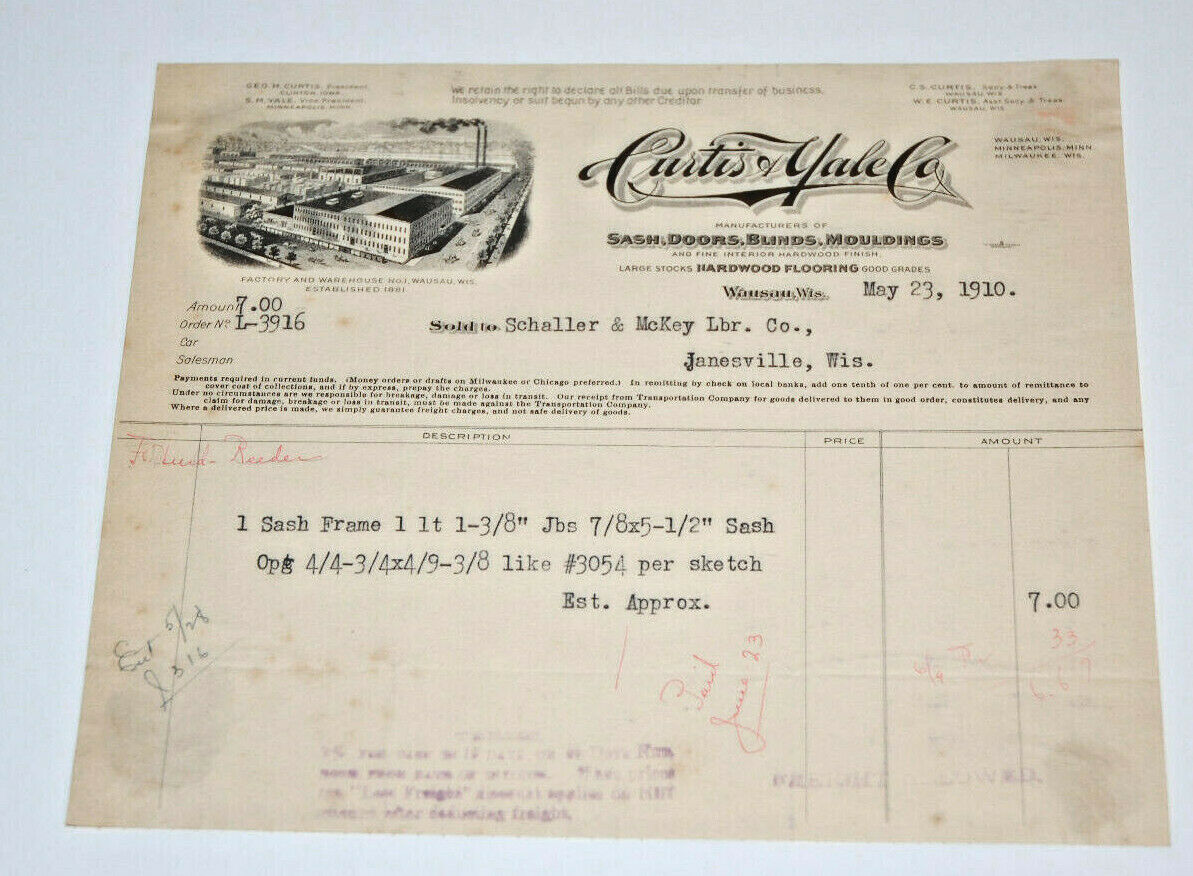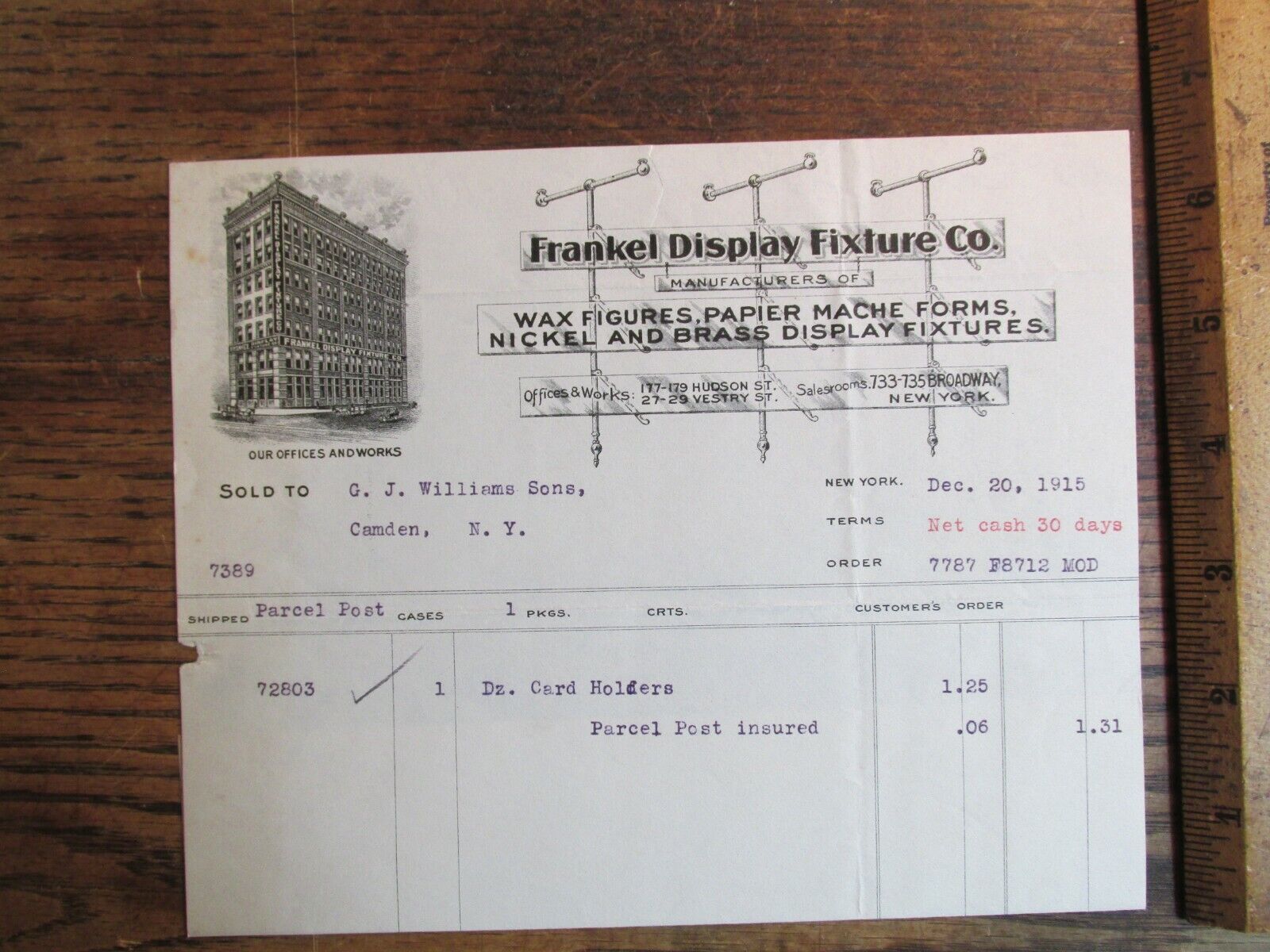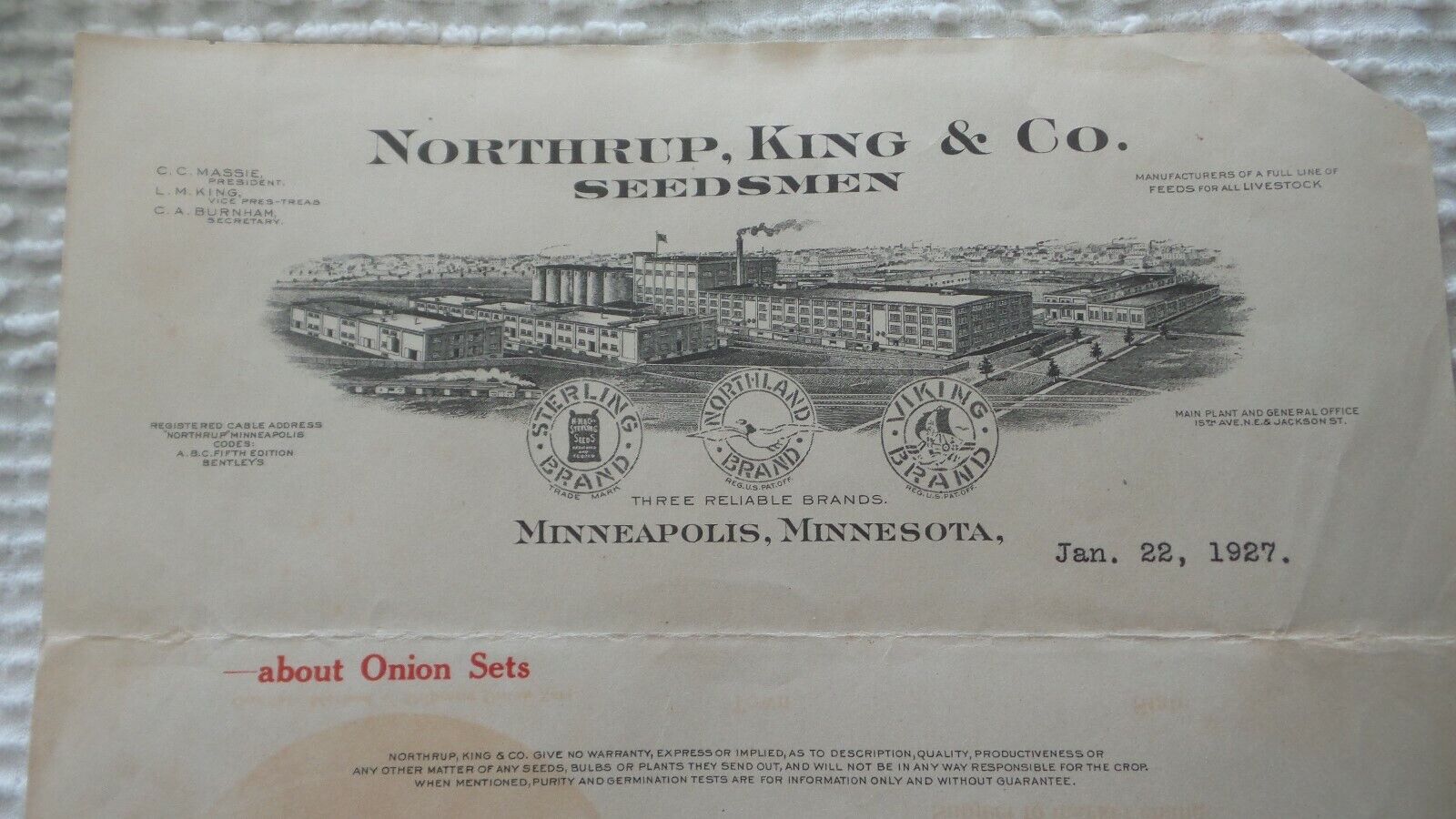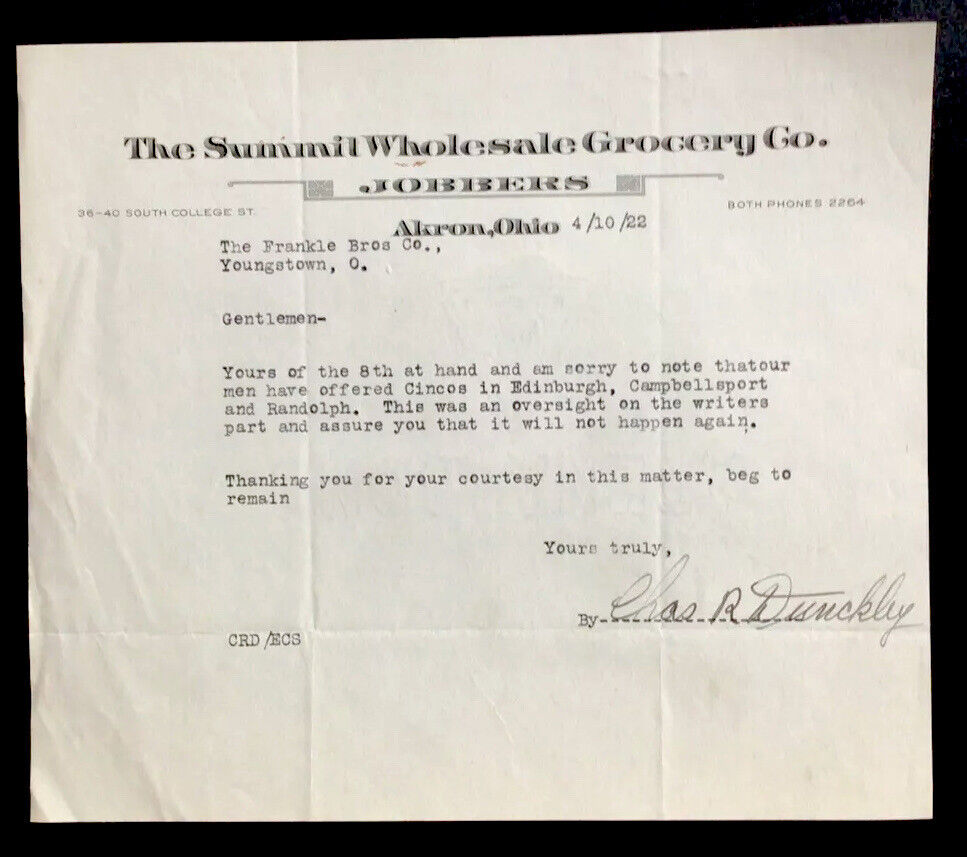-40%
George M. Curtis S.M. Yale Company Sash Minneapolis Minn. Receipt May 23rd, 1910
$ 42.24
- Description
- Size Guide
Description
George M. Curtis S. M. Yale & Company Sash Door Blinds Receipt May 23rd, 1910 !!Minneapolis, Minnesota & Clinton, Iowa companies
CONDITION DESCRIPTION: See pictures. Nominal age related wear and browning. Reverse has some dried adhesive on it where it was displayed once upon a time.
Hello & Welcome
I have been collecting: railroad, bridge, canal, Civil War, Manifest Destiny, Zebulon Pike, rare paper & original art items and sculpture for the last 40 years. My focus was always on UNIQUE / ONE-OF-A-KIND 18th and 19th Century items where there was only 1 example in the entire world. Be sure to check out my other auctions - some of the items I have for sale are so unique, so rare - unless you thought to look at the auctions you would never know they even existed! Save me as a seller, and send me those want lists. I have hundreds of items that have NEVER, EVER been seen publicly, nor offered for sale!
I attained Jedi-Level packaging prowess in my 20th year on eBay, so bid with confidence that what you bid on is what you will receive - and that it will arrive safely!
George M. Curtis
From Wikipedia, the free encyclopedia
Jump to navigation
Jump to search
George Martin Curtis
(April 1, 1844 – February 9, 1921) was a two-term
Republican
U.S. Representative
from
Iowa's 2nd congressional district
.
Biography
Born near
Oxford, New York
, to John S. and Elizabeth (Carpenter) Curtis, Curtis moved to
Ogle County, Illinois
, in 1856 with his parents, who settled on a farm near
Rochelle, Illinois
. He attended the common schools and Rock River Seminary, in
Mount Morris, Illinois
. Curtis was a clerk in Rochelle from 1863 to 1865, and subsequently for two years in
Cortland, Illinois
. He moved to
Clinton, Iowa
, in 1867 and engaged in the manufacture of lumber, founding the Curtis Companies, a conglomerate of associated sash, door, and
millwork
companies that eventually consolidated into a single corporation based in Clinton, Iowa.
[1]
He was also one of the incorporators of the City National Bank of Clinton in 1880. After initially serving as one of its directors, Curtis was elected vice president of the bank in 1890 and served in that capacity until his death. He also served as director in a number of lumber companies.
George Martin Curtis married Etta Lewis (1850–1924) on September 4, 1872. They had two sons – George Lewis and Eugene Judson. Etta Lewis was a native of the State of New York. She was the only child of William Lewis. Both parents died in her early childhood. An aunt adopted the orphan girl and took her to Michigan, where she was educated. When she was nineteen years of age, the family moved to Clinton, Iowa. Here she met George M. Curtis, an energetic young business man, afterward prominent in the political affairs of his state, and they were married. They had three sons and one daughter; the daughter and second son died when quite young. Etta Lewis was a member of the Presbyterian church and deeply interested in church and benevolent work. As President of the Associated Benevolent Society of Clinton for five years, she was instrumental in doing much to alleviate the sufferings of the poor of that city.
[2]
In 1887, he was elected to the
Iowa House of Representatives
, serving in 1888 and 1889. He served as delegate to the
1892 Republican National Convention
.
In 1894, Curtis was nominated to run as a Republican against incumbent Democratic Congressman
Walter I. Hayes
in Iowa's 2nd congressional district. After defeating Hayes, he served in the
54th United States Congress
, then was re-elected two years later and served in the
55th United States Congress
. He refused requests to be a candidate for renomination in 1898. In all, he served in Congress from March 4, 1895 to March 3, 1899.
He resumed his former business activities in Clinton, and died there on February 9, 1921. He was interred in Springdale Cemetery.
His house
in Clinton has been listed on the
National Register of Historic Places
.
















